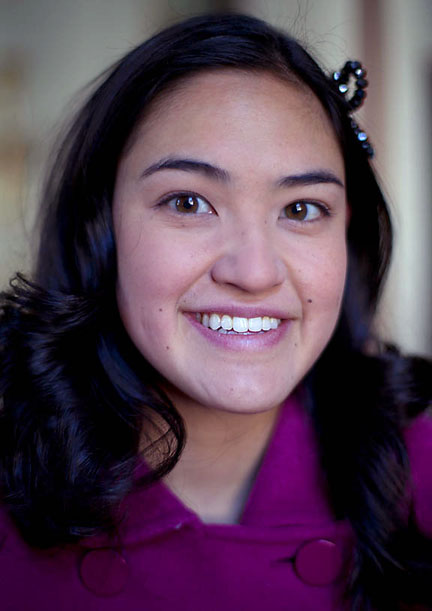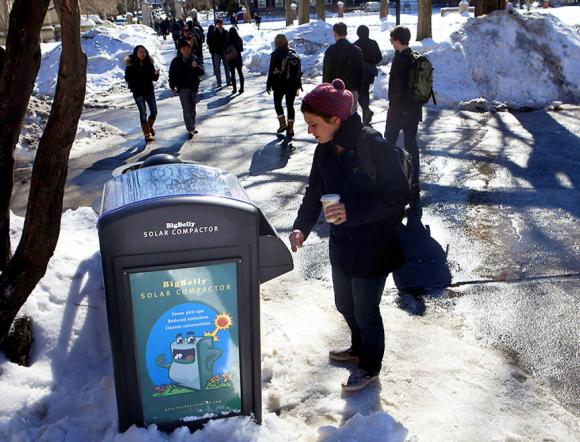Stroll across the College Green or stand outside the Sharpe Refectory, and you may notice a squat, silver container with a solar panel on top that bears a faint resemblance to the lovable Star Wars character R2-D2.
It’s actually a special trash can created by a company called BigBelly Solar. Supporters say the containers handle garbage more efficiently by periodically compacting the trash inside, creating space for more garbage. That’s especially important in high-traffic areas like the Ratty, where warmer weather will mean more people eating lunch outside. The Big Belly is also outfitted with sensors connected to a computer server that can call for trash pickup when the unit is full.
Brown has purchased three Big Bellies and may buy as many as 20 more to spread around campus, according to Ginger Gritzo, energy and environmental programs coordinator in Facilities Management. “Once we saw for ourselves that the unit really was saving fuel and time, we developed a campuswide implementation plan,” Gritzo wrote in an email.

The pair liked what they saw in Big Belly, but the technology seemed unproven, Gritzo said, and the idea stood idle. Then in 2009 before classes started in the fall, Katherine Bergeron, dean of the College, spied the solar-fueled trash cans while on a trip in Ireland. She reported her finding to Facilities Management, and last spring, Big Belly made its première outside the Ratty. Brown is currently the only school in Rhode Island with these receptacles, although the City of Providence has some at Kennedy Plaza.
The space-age trash can instantly became a curiosity on campus. “The thing you hear most often is (students) wonder what it is, why it looks like that,” Morrell said. “It’s an interest generator.”
“Trash cans are something that are so commonplace,” she continued. “People don’t often think about them as (generating) a carbon footprint. I think rethinking that is great.”
Gritzo credited Morrell with getting students interested in garbage disposal (a naming campaign for the big Bellies begins this month as part of “Recyclemania”) and other environmental initiatives on campus.
“When she started working for me we had a small handful of volunteers, and she was our only paid intern,” Gritzo recalled. “Thanks to the success of some of our programs, we now have four paid interns and over 200 volunteers.”
There have been some glitches with the Big Bellies. Not only are some students confused about what they are, Morrell said, but the receptacles lock when they’re compacting trash, so some students leave their refuse on top, blocking the solar panels. “There’s a little bit of a learning curve,” Morrell said.
Nevertheless, she and Gritzo said the Big Bellies have gotten a lot of use and are justifying their $5,000 price. They also fit in well with Brown’s vision of adopting more sustainable practices.
“I feel people feel really good when they’re doing good things. That’s the same with the trash compactor,” Morrell said. “You feel good about participating in it, about being part of positive change.”

